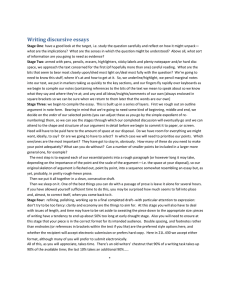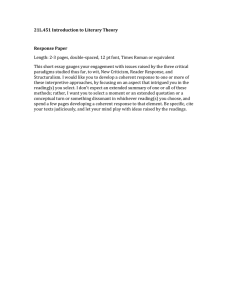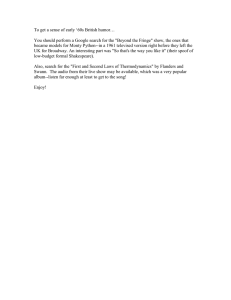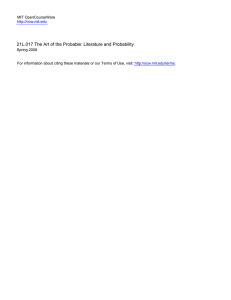21L.001 Foundations of Western Culture: Homer to Dante MIT OpenCourseWare Fall 2008
advertisement
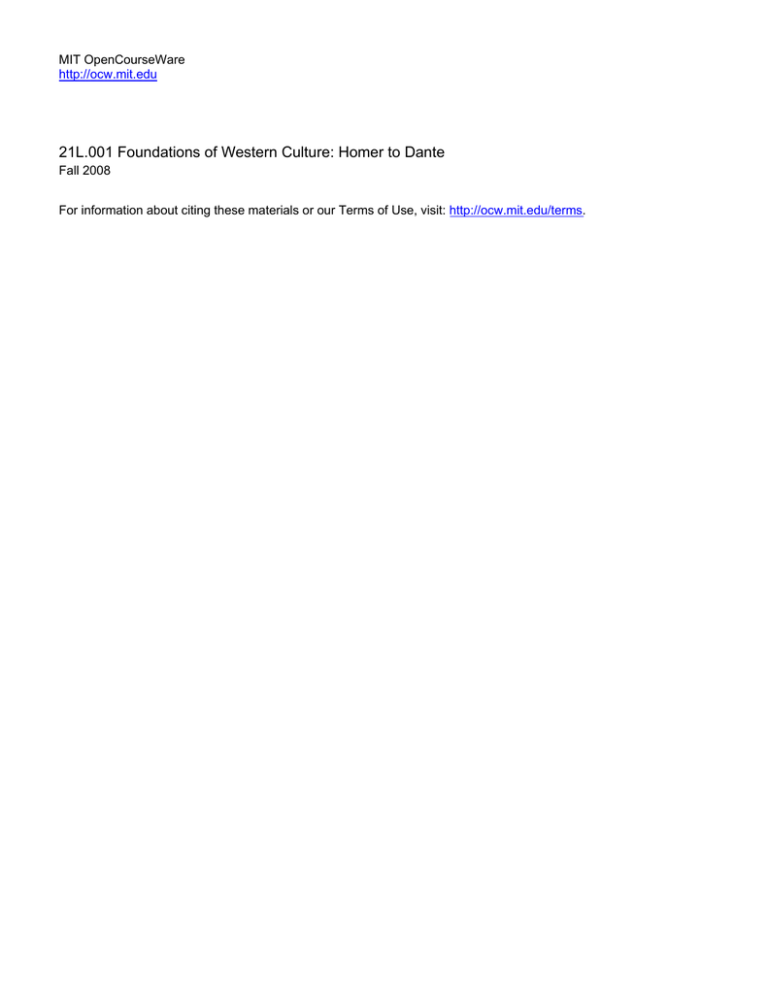
MIT OpenCourseWare http://ocw.mit.edu 21L.001 Foundations of Western Culture: Homer to Dante Fall 2008 For information about citing these materials or our Terms of Use, visit: http://ocw.mit.edu/terms. Arthur W. Bahr 21L.001 Fall 2008 Techniques of Close Reading The first and most important technique of close reading is to think actively about all the elements of close reading on the sheet and the many I doubtless left out (enjambment, for example, or the prevalence of active vs. passive voice) as you read, closely, the text. Read it several times; read it out loud (several times); take notes on anything and everything that catches your eye as you read. Do not try to make the pieces add up to a coherent argument or even picture just yet; instead try to notice everything that is potentially interesting about how the text conveys meaning. This is the time to be capacious, not discriminating. Now that you’ve noticed a lot of stuff, go back and take notes on what significance you think it has: that is, how does it affect our understanding of a character, the plot, whatever. Remember close reading is about using the how of narrative to come to a more in-depth understanding of what it narrates and why it does so in the way it does. Some of what you’ve noticed may have no braoder significance, or none that you can come up with. That’s fine; don’t try to wrench meaning out of a moment you genuinely believe has none. At the same time, don’t be shy about speculating on a textual moment’s significance, especially if it corroborates what a different textual moment suggests. For example, if the diction in a given line seems to suggest X, and the syntax seems to as well, you might more readily trust an instinct that the rhythm and cadence of the lines further strengthens the reading. But at this stage don’t worry too much about how plausible your thoughts on significance are; think broadly and fearlessly, as there will be plenty of time to self-censor later. Now leave it alone. Go away, think about something else, eat, get some exercise, whatever. When you come back, read closely again, both the text and your own notes, and this time also think critically about all the stuff you noticed the first time, and the significance that you ascribed to it. Which of your points seem the most convincing, which seem the most interesting (these may not be the same), and which seem like a stretch? Which points reinforce one another along lines described above, and which seem to be at odds with one another? Now is when you subject your earlier enthusiasm to hard analytic rigor. What objections do you think I or other informed readers might have to your speculations? How would you respond? Putting the pieces together, what does the big picture of your close reading suggest, what larger argument can you see the outlines of? Where else in the text would you go to find evidence to support his larger argument? What objections to it would you have to deal with, and how would you envision doing so? This – in very abstract terms – is how to use close reading in the service of literary analysis. Your close reading exercise will ask you to put these abstract guidelines into practice.
